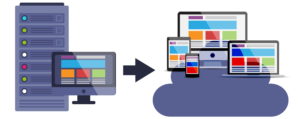2020 Printing Trends
With 2020 fast approaching, we’ve taken a look at upcoming 2020 printing trends. The year is going to see some interesting changes in the printing field.

In our 2020 printing trends outlook, especially with digitalization continuing to transform so many aspects of business, one question that you may have is whether printing is still necessary. And like every year, the answer to that question is a solid yes.
Despite moves to greener or paperless offices, printing is still a mission-critical part of our everyday working lives, and people continue to read better from paper than screens.
But that doesn’t mean that printing remains as it always was. It’s continuing to develop rapidly, keeping pace with trends like Windows Virtual Desktop, increased security or the cloud-based service approach. Here at ThinPrint, we’ve taken a look at what challenges, and solutions you can expect to encounter when it comes to the printing trends of 2020.
Smart MFPs Becoming Even Smarter
In our first 2020 printing trend, printer manufacturers are looking to expand beyond just selling many devices. IT is focusing on additional software and services too.
MFPs which offer not just printing, but also copying and scanning etc., are increasing coming with additional apps and workflow solutions. Also expected for 2020 is enhanced integration, for example with office applications like Salesforce and QuickBooks, or Microsoft’s OneDrive.
Security is Key
Until recently, people didn’t really see printers as being high-tech despite them being one of the original IoT devices. That printers evolved from being ‘just a printer’ to MFPs is helpful for workflows and document management, however, security risks are present if proper safeguards aren’t put in place.
Despite this, and with more security-related print solutions on the market, there has been an increased awareness of the security challenges that printing environments face. ThinPrint, for example enables fully compliant GDPR pull printing as well as end-to-end encryption.
Increased Competitiveness in the Market
Another 2020 printing trend is more competition. We may or may not see a $27bn tie-up between Xerox and HP. But despite that, many other players in the market are looking at ways to grow their customer base with new offerings. These include packaging and labels, 3D printing and print kiosks.
Manufacturers who were traditionally strong in the retail sales area are looking too to growing their distributor networks. Expect IoT to also play an even greater role in the printing field in 2020.
Non-Print Technology Causing an Impact
Microsoft launched Windows Virtual Desktop in September 2019 and it is expected to significantly impact the virtualization market (and printing) in 2020. Another example of new challenges and opportunities that many IT admins will be dealing with.
For its new technology, Microsoft selected ezeep as its launch partner ensuring secure and easy connectivity to existing print environments as well as printing from any device.
Printing On The Go
In another 2020 printing trend, demand for greater access to printers away from the desk will increase. We are no longer tied to our desks as much as in the past – with smartphones, smart watches or tablets, users have more and more channels to access and edit data.
Enabling mobile workers to become more productive is a drive that will continue in 2020 and smooth, trouble-free printing remains a key aspect of uninterrupted workflows.
Sustainable Printing Here to Stay
While printing is often seen as wasteful, the impact is sometimes overestimated. 1 KG of virgin pulp paper results in 1.2 KG of CO2 , and recycled paper just 0.7 KG. Taking office-standard paper, one sheet results in about 5g of CO2.
To put this into perspective, even including the energy used for printing, one cheeseburger has the same CO2 emissions as about 400-800 printed pages.
However, enabling more climate-friendly printing is easy. Use recycled paper, enforce duplex printing, and if printing volumes are not that high, use an inkjet printer.
Printing as a Service
For our final 2020 trend, we expect print management services that let organizations centrally manage their entire print infrastructure from the cloud to make an even greater impact in 2020.
By eliminating the need for a range of products, reducing overall operating and printing costs, and increasing employee and IT productivity, their adoption is set to grow. ezeep for example, requires just a one-time setup and configuration, outsourcing IT maintenance to ezeep’s cloud, so that network development does not have to be continuously maintained on site.
We hope you have a better idea of some of the main printing trends in 2020. If you have any questions about printing in your organization today, or in the future feel free to contact us here at ThinPrint. Make sure you don’t miss out on our other blog posts on printing too.




